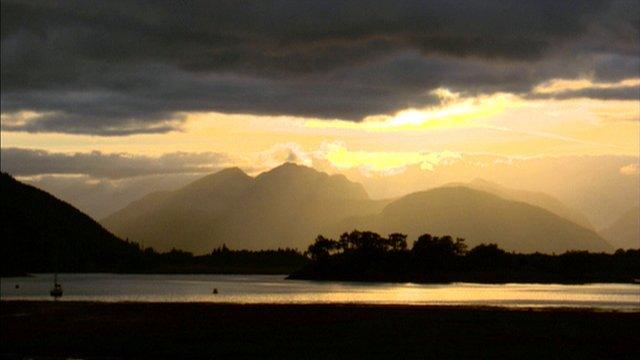Land reform - The battle to decide who owns Scotland
- Published
The Land Reform Bill will end tax relief for shooting estates
Tracts of private land could end up in community control under radical plans to shake up land ownership in Scotland. Islay - off the west coast of Scotland - is home to 3,000 people but most of the island is owned by just a few wealthy men, highlighting a fault line in the rural life.
They call her the Queen of the Hebrides and it is easy to see why.
Islay is a lovely place, a pastoral isle off the jagged west coast of Scotland, warmed by the Gulf Stream; next stop North America.
On the lush sward, which rises gracefully from a shimmering sea, sheep and cattle graze and the bright jewels of the machair shine among the grasses.
On this breezy midsummer's day on the edge of the world, it is warm enough to slip off your shoes and go barefoot on the seaweed-strewn sand.
The air is rich with the scent of single malt whisky, blown on the wind from one of eight distilleries. A ninth is in the works.
Tourists flock here to Islay to sample a peaty dram, to watch the birdlife, to breathe the briny air.
It looks idyllic - and prosperous - but this is also a land of sorrow and decay.
Clouds gathering
On a dusty track just outside the island's main settlement, Bowmore, Alasdair and Rachel Whyte are standing at a metal gate.
It affords a view of the bay and the hills beyond but their eyes are on the fields in the foreground.
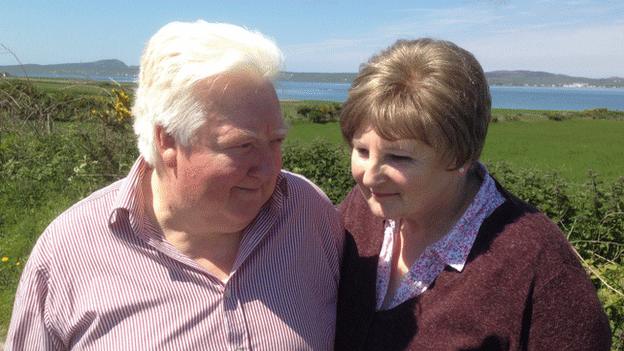
Alasdair and Rachel Whyte were "shocked" to receive a notice of eviction

The land is said to have been farmed by Whytes for five generations
"The sun may be shining but there is a cloud over Islay," says Mrs Whyte, in a lyrical island lilt.
These fields, she explains, were in her husband's family for more than a century, passed down through five generations of Whytes.
They did not own the land but were tenant farmers, part of a feudal system which survives to this day.
Three years ago the land here was taken off the Whyte family when Mr Whyte's sister Aileen died suddenly at the age of 47, unmarried, childless and without a will.
The tenancy of the 100 acres was in her name and the law did not regard her brother as a close relative.
On that, Rachel Whyte is scathing: "Who could ever say to somebody that you're not a close enough relative to your sister? That ends all stories."
Notice of eviction
The Whytes say they were initially told they could keep farming the land but one day later a notice of eviction arrived by post from a legal firm in Edinburgh.
The landowner, or laird, could have made an exception but chose not to do so.
"I was totally shocked and stunned," says Mr Whyte, "totally heartbroken."
The letter explained that the Whytes had no claim on the land and that the estate wanted it "in-hand" to "complement our future plans".
Those plans turned out to be the building of scores of new houses.
"They are taking good agricultural land …and putting people who were making a living off the land, they are putting them out," says Mr Whyte.
His wife claims that this is a deliberate policy to drive farmers off the fields, out of the glens and into new properties in Bowmore, a claim denied by the laird.
New housing
Lord Margadale of Islay Estates, who owns around a third of the island, insists he followed the law and says Mr Whyte was not a suitable tenant who "didn't have a great track record with animal welfare", a claim to which the Whytes object.
The laird insists that the new housing is vital for the island, that he is investing in Islay's future and that the feudal system can be defended.
"There's always room for landlords and tenants," he says, "it works pretty well elsewhere in the UK."
"For people to get into farming the tenant system is the best way forward because with limited capital they're not going to be able to go and buy a farm."
In any case, insists Lord Margadale, the "pendulum has swung" in favour of tenants, following a first bite at change in the Land Reform Act, external 2003.
Crofters, he points out, already have a right to buy their land and overall "tenants have a lot more power, which is probably healthy".
Mrs Whyte disagrees and sticks by her claim that the island is changing for the worse.
"We have had rural communities," she says, "little pockets and it's kept shops going, little businesses going, the individual schools going.
"Now what you're doing is we're having another highland clearance. It's another highland clearance.
"Keep them down. Keep them all together. Get them in a group. Herd them up."
Clearances
All of this is rather familiar. A short drive through Bowmore and around the head of the sea-loch, the Bell family are reflecting on the 18th and 19th century highland clearances, the forced and sometimes brutal displacement of tenant farmers across the Scottish highlands and islands to clear land for sheep.
Many ended up in planned towns as the glens were emptied. Gaelic culture and clan society were devastated.
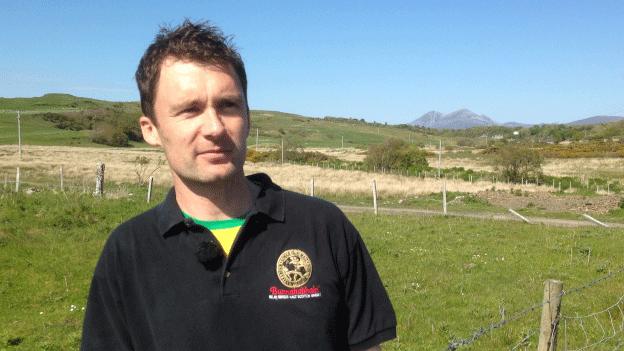
Land reformer Tony Rozga says people are still being forced to leave rural areas
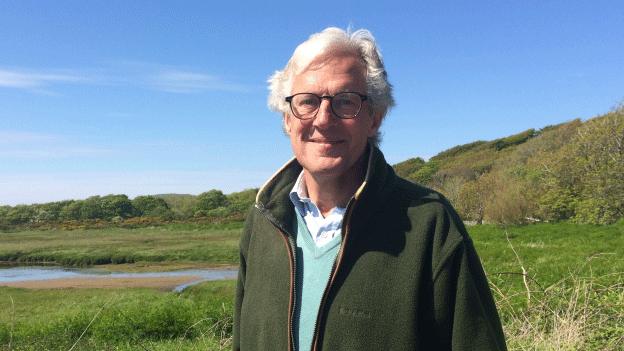
Landowner Lord Margadale insists he and his family care about the land
Thousands more set out across the Atlantic to seek a new life, including Bruce Bell's ancestors, who headed west to the Canadian province of Manitoba.
"They were all tenant farmers and they were not doing very well at the time," explains Mr Bell who is back in Islay from Canada on holiday.
"Canadian Pacific Railway was putting on a major push where they were basically giving you free tickets and free land.
"The whole family, not just my grandfather, his father and all the brothers and sisters all came over as one big unit," he says.
Tony Rozga, a land reform campaigner on Islay who did manage to buy his family farm from Islay Estates, agrees that there are parallels with the present day.
He takes us for a drive to a spot where you can see three or four derelict houses from the main road.
"This is an example of a typical house that's not been lived in for a long time and could be sold off and developed by local people," says Mr Rozga, pointing to a dilapidated schoolhouse.
"There's other farmhouses like this dotted all over the island which used to be family farms with families in them," he adds.
"We would like to put forward a land reform case where you could persuade large estates to maybe sell off a bit of land, sell off houses, sell off farms, sell off bits so as the people who are here and making a living from the land can then do the investment that's required."
Instead, he argues, tenant farmers are leaving their rented plots for the town or the mainland, reluctant to invest in land they do not own, especially if investment ends up increasing the value of the land and the rent going up.
'Powerful lobby'
A fellow campaigner, Catriona Bell (whose forbears stayed to till the land rather than heading to Canada) worries that the Land Reform Act will not be radical enough for her taste.
Scottish government ministers have promised to end tax relief for shooting estates, to establish a registry of privately-owned land and to force the sale of land if the owners are blocking development but Mrs Bell still frets that the legislation will not have teeth.
"The Scottish government will be taking on a very powerful lobby and really landowning essentially is power and it's power to decide a lot of things, not just tenancies," she says.
"It's power to decide where houses will be built, where almost any infrastructure will happen, so diminishing that power is going to be something that is going to be very difficult."
Across the water, part of the neighbouring island of Jura is owned by Lord Astor, whose step-daughter Samantha Cameron is married to the prime minister David Cameron. The family are frequent visitors.
Lord Astor caused a stir recently with an article in the Spectator, external asking whether landowners should fear a "Mugabe-style land grab", a reference to the seizure of farms by Zimbabwe's President Robert Mugabe.
Lord Astor says he stands by the comments. He is highly critical of the Scottish government's approach.
"If you are going to empower local communities you've got to make sure it's the local communities who will benefit," he says, arguing that the present system brings great benefits to the highlands and islands.
And he worries about nationalist motives asking, "is there going to be an implication if you're not Scottish you can't own land in Scotland?"
"That brings into question 'who are the Scots?'"
Ploughing back
Lord Margadale agrees with Lord Astor that the status quo is good for tenants and owners alike.
"We've been here for 160 years," says Lord Margadale, "we care about it, we're not milking it.
"We ourselves have never taken a bean out of the place," he insists.
"We've always ploughed everything back in …it's all spent on the island."
But speaking before the bill's publication, rural affairs secretary Richard Lochhead, defends the Scottish government's approach.
"This is not about land grabs," he insists, "this is about sorting out those areas where quite clearly economic development in this country, which is after all in the public interest, is being hampered by who owns the land and how it's managed."
Ministers, he argues "should have the tools to intervene" on behalf of the people of Scotland to "make sure that communities are able to have much more say over their own destinies, their own futures."
Here on Islay and across Scotland, the centuries-old question of whether the land should be used for private gain or for the common good - or whether both are possible - remains controversial.
And with the publication of the latest attempt to wrangle with it we are approaching a new battle on very old ground.
- Published26 November 2014

- Published7 June 2014
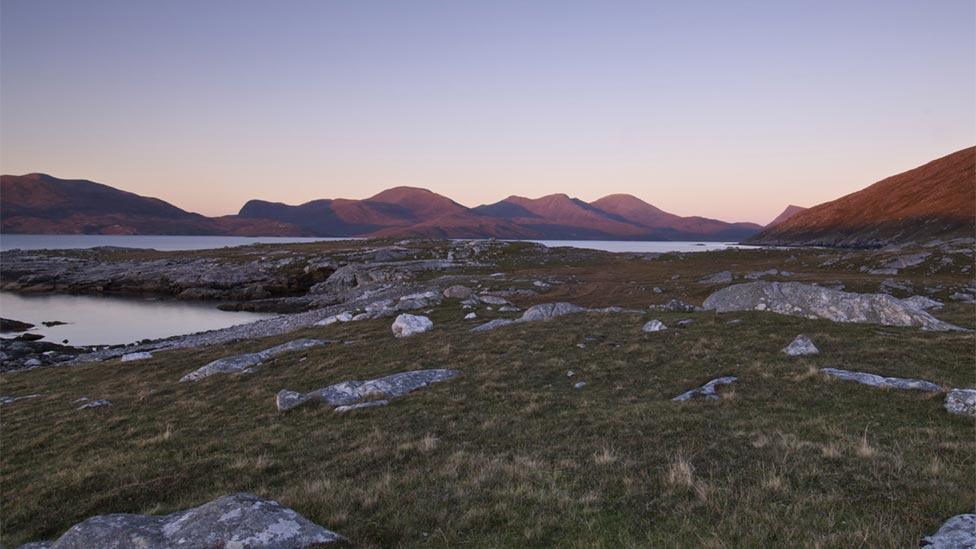
- Published8 January 2014
